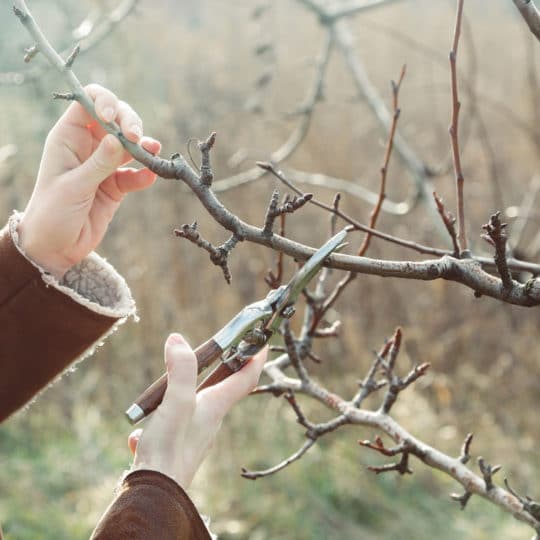Benefits of Winter Tree Pruning
What Should Stay & Go
Posted
February 17, 2022

According to the weather-predicting groundhog, there are six more weeks of winter ahead of us. How are your trees coping? Through snow, wind, ice, and dramatic temperature changes, our plants can take a beating. Proper pruning is one way to help relieve some stress so they can bounce back once it’s finally spring. Learn more about the benefits of winter tree pruning and how to do it correctly.
Benefits of Winter Tree Pruning
You may have heard that winter is the best time to prune your trees, but do you know why? Here are some of the top benefits of pruning this season.
You can see the tree. No buds, no leaves, nothing but bark and branch. This makes it easier to notice which branches are torn, discolored, or out of place. Focus on the areas you want to cut without doing damage to healthier branches around it.
Do not disturb. Depending on how much pruning needs to be done, you may need to bring in heavy machinery to get the job done. This isn’t a problem for your grass or other plants during the winter, because that’s dormant as well. Your tree also gets more time to heal from any pruning cuts before it starts to use its energy for blooming.
Too cold for mold. Diseases thrive in warm, wet environments. Many forms of bacteria, fungi, and insects are dead or dormant during the winter. This makes it less likely for disease to spread through your tree or from plant to plant.
Removing the hazards. One of the main purposes of pruning is to get rid of the hazardous parts of the tree. These dangling branches become even more of a threat during winter storms. Not only are you doing away with what could break off first, but you’re making the tree stronger in the process.
What Should Stay
There are some trees and shrubs that shouldn’t be pruned just yet. If you notice buds have already formed on your plants, plan to wait until after these flower to start pruning. Anything that usually blooms in late spring, early summer, or fall should be good to go.
You also never want to prune too much of any plant. Start with what’s dead and diseased first, then whatever branches are crisscrossing. If you take off too much, your tree will be just as stressed in the spring. If too much of the crown/top is gone, you may as well have removed the tree entirely.
The goal is to prune what needs to go and keep what can stay. This is the best way to help promote the health, safety, and beauty of trees. For more tips on proper pruning or a consultation on getting the job done right, contact the specialists at Cardinal Lawns.

Download Your FREE Summer Plant Care Guide
Help your plants make it through a hot & dry summer looking like a million bucks with our summer plant watering and maintenance guide!